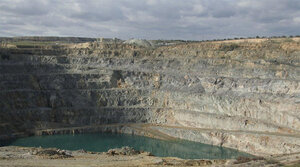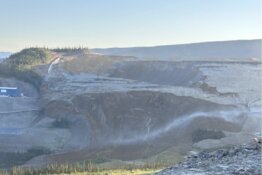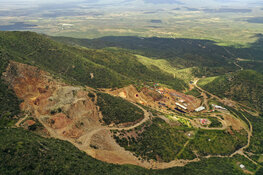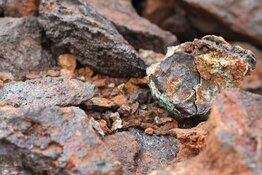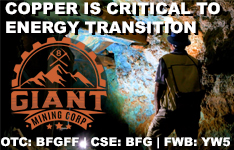Defense Metals Corp. (DEFN:TSX.V; DFMTF:OTCQB; 35D:FSE) has announced support from the Government of British Columbia for its Wicheeda Rare Earth Element (REE) Project. This initiative aligns with BC's critical minerals strategy and the global shift towards green technologies. The provincial government’s backing is expected to aid in navigating regulatory processes and advancing funding opportunities.
Josie Osborne, BC's Minister of Energy, Mines, and Low Carbon Innovation, highlighted the project's significance in the news release, stating, “Rare earth elements play a crucial role in green technologies like wind turbines and electric vehicle motors, and projects such as Wicheeda are integral to BC's critical minerals strategy and the world's energy transition.” The establishment of the BC Critical Minerals Office is anticipated to provide a 'concierge-like' service, streamlining the project’s development.
Craig Taylor, CEO of Defense Metals, expressed optimism regarding the support, noting that it will mitigate regulatory and permitting delays. “This crucial support from the provincial government is very significant and most welcome as it will enable the development of our Wicheeda rare earth deposit by mitigating regulatory and permitting delays,” said Taylor. The company aims to commence production in 2029, bolstered by extensive metallurgical pilot testing and positive evaluations from potential third-party off-takers.
The Rare Earth Metals Market
Rare earth elements (REEs) have gained significant attention due to their crucial role in various advanced technologies and their impact on national security, energy independence, environmental sustainability, and economic growth. According to the Department of Energy’s Fossil Energy and Carbon Management Office, "Rare earth elements (REEs) play a critical role in our national security, energy independence, environmental future, and economic growth." These elements are essential components in many advanced technologies, including magnets, batteries, phosphors, and catalysts, which are vital for sectors such as healthcare, transportation, power generation, petroleum refining, and consumer electronics.
The interest and research into the recovery of REEs from end-of-life products and secondary sources, such as coal and coal byproducts, have recently increased. The Department of Energy noted that these efforts are crucial in identifying domestic sources containing high amounts of REEs and overcoming key obstacles in the pursuit of economic and commercial-scale recovery. "Advancements in REE recovery from coal and coal byproducts could provide a secure supply of critical minerals, mitigate environmental impacts, and diversify the job portfolio of the domestic fossil fuel industry," according to the Department of Energy.
The supply chain for rare earth materials and permanent magnets is complex and regionally concentrated, often marked by a lack of transparent pricing. This complexity can lead to unpredictable costs, budgeting difficulties, and supply insecurity. "The supply chain for rare earth materials and permanent magnets is complex, regionally concentrated and marked by a lack of transparent pricing," according to Fastmarkets. This situation underscores the strategic importance of developing domestic production capabilities.
In recent years, the U.S. government has taken significant steps to address these challenges. An April post from Nasdaq highlighted that in February 2021, President Joe Biden signed an executive order aimed at reviewing shortcomings in the nation's domestic supply chains for rare earths and other critical resources. Subsequently, in June 2022, Biden invoked the Defense Production Act to increase the domestic production of critical minerals, including rare earths, and to fund feasibility studies and expand existing resources. Additionally, the Biden administration announced US$156 million in September 2022 to support the creation of a "first-of-a-kind facility to extract and separate REEs and critical minerals from unconventional sources like mining waste." The Department of Energy further allocated US$32 million to build facilities for the production of REEs and other critical minerals from domestic coal-based resources.
The rare earth metals market is divided into light and heavy categories based on their atomic weights. Both light and heavy rare earth metals are versatile and play a vital role in manufacturing electronics. The Investing News Network highlighted that "both light and heavy rare earth metals are versatile and play a vital role in manufacturing electronics." Light rare earth metals, such as neodymium and praseodymium, are used in various technologies, including mobile phones, electric cars, medical equipment, and permanent magnets essential for data storage systems and wind turbines. Heavy rare earth metals, including dysprosium, yttrium, and terbium, are critical due to their low supply and increasing importance in clean energy technologies. "Dysprosium, yttrium, and terbium are considered critical in the heavy rare earth metals group as they face low supply and increasing importance in the development of clean energy technologies," reported Investing News Network.
Global demand for rare earth metals is expected to rise as the clean energy, electric vehicle, and consumer electronics industries gain importance. "Global demand for rare earth metals is expected to rise as the clean energy, electric vehicle, and consumer electronics industries gain importance," stated the Investing News Network in May. This growing demand underscores the strategic importance of developing reliable and sustainable sources of rare earth elements to support the transition to a cleaner and greener economy.
Catalysts For Defense Metals
The Wicheeda REE Project has several factors driving its development forward. The strategic support from the BC government is a key catalyst, providing crucial assistance in navigating the regulatory landscape and accessing funding opportunities. This support underscores the importance of the Wicheeda project within the broader context of BC's critical minerals strategy and the global push towards green technology.
Additionally, Defense Metals has announced significant technical progress, including comprehensive metallurgical pilot testing. Craig Taylor, CEO of Defense Metals, emphasized the importance of these advancements, stating, “This, combined with the solid technical progress we have achieved, including extensive metallurgical pilot testing and evaluation of samples by potential third-party off-takers, reinforces our confidence that we are on track to meet our objective of commencing production in 2029.”
Guy de Selliers, Chairman of the Board of Defense Metals, reinforced the project's potential, “These positive developments strengthen my belief that Defense Metals will become the first new significant North American producer of NdPr, two of the most essential rare earth elements.”
The project's strategic location is another catalyst. Situated approximately 80 kilometers northeast of Prince George, British Columbia, the site is accessible via paved highways and all-weather gravel roads. Proximity to infrastructure such as hydro power transmission lines, gas pipelines, and the Canadian National Railway, facilitates efficient logistics and access to port facilities at Prince Rupert, enhancing the project's viability.
Expert Analysis
According to Paradigm Capital in their June 25, 2024 report, "We continue to like Defense Metals Corp. as one of few North American rare earth plays, and the company is our Top Pick in the space for H2/24 for its quality of assets and strategic value. It is on track to release a prefeasibility study in H2/24. Defense Metals continues to gain momentum."
This positive outlook from Paradigm Capital reflects the growing interest and support for Defense Metals Corp. within the rare earth elements sector. With its Wicheeda Rare Earth Element Project benefiting from significant technical progress and government support, the company is poised to advance its role in supplying critical minerals essential for green technologies and various high-tech applications.
Ownership and Share Structure
About 5% of the company's stock is owned by insiders, including Director Andrew S. Burgess, who owns 1.5%, and CEO Taylor, who owns 0.97%, according to Reuters.
About 11% of the company is owned by institutional entities, including RCF Opportunities Fund II LP, with 10%, the company said. The rest, 84%, is retail.
Defense Metals has a market cap of CA$55.6 million with 258.62 million shares outstanding and 248.44 million free-floating. It trades in a 52-week range of CA$0.35 and CA$0.15.
| Want to be the first to know about interesting Base Metals investment ideas? Sign up to receive the FREE Streetwise Reports' newsletter. | Subscribe |



